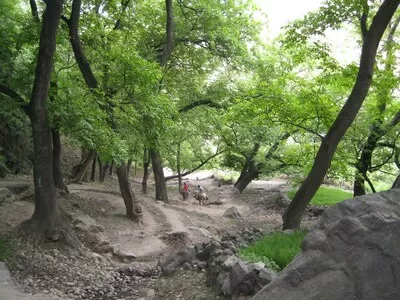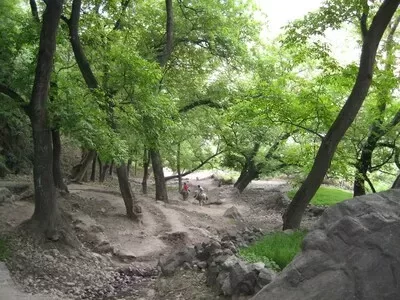

In the realm of environmental conservation, a fundamental shift is occurring—one that emphasizes holistic approaches over narrow, single-focus strategies. This evolution is not merely a theoretical concept but a pragmatic response to the interconnectedness of ecosystems and the intricate relationship between nature and human communities.
Traditionally, conservation efforts often centered around preserving specific elements of the environment: a particular river, wetland, forest, or endangered species. While these endeavors undoubtedly had merit, they often fell short in addressing the broader complexities of ecological systems. However, updated scientific insights have underscored the limitations of such isolated approaches and highlighted the efficacy of embracing a more comprehensive viewpoint. Scroll down for Five strategies to combat climate change & declining biodiversity.
Recent studies and expert opinions increasingly advocate for holistic conservation strategies that recognize the intricate web of interactions within ecosystems. Rather than viewing nature as a collection of discrete components, this approach considers the dynamic relationships between various elements—plants, animals, soil, water, and climate—and the profound impact they have on one another.
Why the shift towards holistic conservation? The answer lies in recognizing the symbiotic relationship between biodiversity and human well-being. Ecosystems provide a myriad of essential services that directly benefit people, from purifying the air we breathe to regulating the climate and mitigating natural disasters. By safeguarding the health and integrity of entire ecosystems, we not only preserve biodiversity but also bolster our own resilience and prosperity.
Take, for example, the preservation and restoration of wetlands. Historically undervalued and often drained for agricultural or urban development, wetlands are now recognized as invaluable ecosystems that provide a host of benefits. Beyond serving as critical habitats for diverse plant and animal species, wetlands play a crucial role in flood mitigation, water purification, and carbon sequestration. By protecting and restoring wetlands, we not only conserve biodiversity but also mitigate the impacts of climate change and safeguard communities against the ravages of extreme weather events.
Similarly, embracing a holistic approach to forest conservation entails more than just protecting individual stands of trees. It involves understanding the intricate ecological processes that sustain forests and recognizing their multifaceted contributions to ecosystem health and human well-being. Healthy forests not only serve as vital carbon sinks, helping to mitigate climate change, but also provide habitat for countless species, regulate local weather patterns, and support livelihoods through ecosystem services such as timber production and ecotourism.
Moreover, holistic conservation strategies offer a more resilient response to the uncertainties posed by climate change. As our planet faces escalating threats such as rising temperatures, more frequent and severe storms, and shifting precipitation patterns, it becomes increasingly clear that piecemeal conservation efforts are inadequate. By adopting an integrated approach that considers future conditions and fosters ecosystem resilience, we can better adapt to the changing climate while preserving the essential services that nature provides.
The paradigm shift towards holistic conservation represents a significant step forward in our efforts to protect both ecosystems and communities. By recognizing the interconnectedness of nature and embracing strategies that safeguard the integrity of entire ecosystems, we can forge a sustainable path forward—one that ensures the well-being of both present and future generations. As stewards of this planet, it is our collective responsibility to adopt holistic conservation approaches and strive towards a harmonious coexistence with the natural world.
Five strategies to combat climate change & declining biodiversity
In the United States, employing these five strategies can effectively combat climate change and stem the decline of biodiversity.


Preserve Ecosystems
According to the International Union for Conservation of Nature, establishing expansive protected areas like reserves or national parks serves as a crucial defense against both climate change and biodiversity loss. When managed efficiently, these areas not only safeguard natural and cultural resources but also promote human health, well-being, and sustainable livelihoods.
Restore and Connect Fish and Wildlife Habitats
Across the country, numerous pathways and migratory routes for fish and wildlife have been disrupted by infrastructure such as roadways, dams, and culverts. Removing or retrofitting these barriers and constructing new crossings facilitates the movement of species and access to essential food sources. See also: Creative Solutions to Improve Ecosystem Connectivity
Photo: Forests and trees offer shade, food and water in regions suffering increasingly from drought and heat, such as Morocco, but are threatened at the same time. Photo A. Buck,
Enhance Nature’s Resilience to Environmental Changes
Government agencies responsible for managing public landscapes often develop climate-ready management plans to anticipate and mitigate the impacts of climate change. These plans integrate scientific research and indigenous knowledge to assess anticipated changes like warming temperatures, rising sea levels, and heightened wildfire risks, ensuring effective ecosystem stewardship.
Strengthen Community Preparedness for Climate Challenges
Addressing the impact of natural disasters and climate-related events requires collaboration across all levels of government and active engagement with the public. While resilience planning to mitigate floods, wildfires, and sea-level rise is relatively new for many states, developing comprehensive resilience plans enables leaders to anticipate future conditions, implement adaptive strategies, and allocate resources to vulnerable communities most susceptible to climate risks.
Harness Natural Carbon Capture
While immediate and sustained reductions in greenhouse gas emissions are paramount in combating climate change, significant progress can also be achieved by protecting ecosystems that absorb and store greenhouse gases. Freshwater and coastal wetlands, including peatlands, mangroves, seagrasses, and salt marshes, possess unparalleled capacity to sequester carbon. Moreover, these ecosystems provide vital benefits such as buffering communities from sea-level rise, enhancing air and water quality, supporting wildlife habitats, and preserving cultural resources.
By embracing these comprehensive approaches, the United States can make significant strides in mitigating climate change impacts and preserving biodiversity for future generations. Collaboration among governmental bodies, scientific communities, and the public is essential to implement these strategies effectively and ensure a sustainable future for all.
Related stories
Tasmanians want an end to native forest logging
Chipko movement – the beginning of Non-Violent Direct Action
Land and Environment Court rules, not OK




